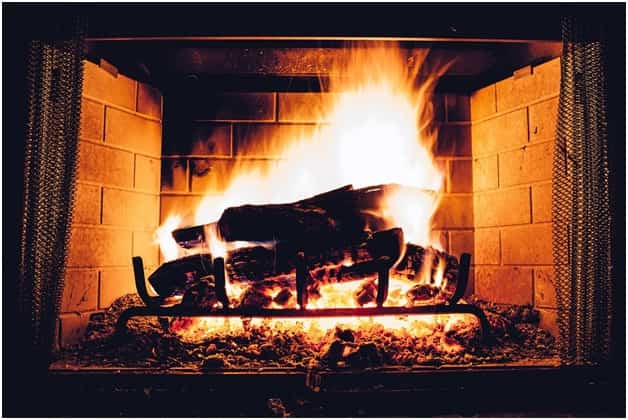
People who are seeking to build a brand new home, as well as those who are opting to replace their current heating, ventilation, and air conditioning (HVAC) system, will likely come across high efficiency condensing furnace as one of their options.
With energy costs rising, new homeowners are looking for ways to save more and more money. Since heating and cooling your house can cost approximately half of the typical home’s energy consumption, it’s critical to make the switch to a high-efficiency furnace in order to save on your utility bills. These kinds of furnaces deliver reliable warmth and comfortably heat your entire home while using less energy, saving you tons of money.
In order to understand what makes a highly efficient furnace effective you first have to understand how an ordinary works in the first place.
A typical furnace is made up of five different components:
- Combustion chamber – This is the enclosed space within the furnace where the fuel or gas is burned.
- Burners – These are what combine the air and fuel to make the heat.
- Heat exchanger – This part is made up of metal tubes or coils that are heated by the warmth created by the burners. As long as the furnace is on and running, the heat exchangers stay hot.
- Blower – This fan blows and circulates the heat in your house.
- Flue – The flue can be thought of as the chimney of your furnace. It ventilates harmful fumes and pushes them outside and away from your home.
High-efficiency furnaces include these parts and more. While traditional furnaces have an Annual Fuel Utilization Efficiency, or AFUE, of 78 percent, high-efficiency ones must have a rating of 90 percent or above. This rating is noted on the outside of the unit on a yellow EnergyGuide label that is required by the Federal Trade Commission (FTC). The label will tell you the estimated operating costs for conditions to help you compare one type of furnace to the next.
This rating is measured by how well the furnace changes fuel into heat, and how much is left over without making any product. This means that the high-efficiency furnace is converting 90 percent or more of its fuel into heat.
Saving Energy Dollars
Another way to look at it is to consider that 90 cents out of every dollar spent on energy bills to heat your home is converted into heat. With a traditional furnace model, about 12 cents or more of every dollar you spend is wasted. That change can add up fast with today’s rising energy expenses.
How High Efficiency Furnaces Get Their Effectiveness

Firstly, high-efficiency furnaces include another combustion chamber. This chamber gathers runoff gas fumes that would typically escape from the flue. It then condenses the fumes into a liquid material and repeats the burning process again to generate excess heat.
Another set of heat exchange tubes or coils are included in a high-efficiency furnace to take the burden off of the first changer. This guarantees the two heat exchangers operate smoothly and with less energy while producing more heat.
Shopping for a High-Efficiency Furnace
These upgraded furnace units convert more of the money you are spending on energy into heat, compared to the lower priced models. While they are more expensive to install, you’ll be saving tons of money over shorter periods of time, depending upon your usage.
When selecting a high-efficiency furnace, always be sure to compare efficiency ratings and features of the models you are considering to buy. You can also get quotes from trustworthy HVAC contractors to learn more about the total cost of the furnace and installation. Several factors can make these costs vary, including ductwork.
You will also want to consider the warranty your furnace will come with. High-efficiency units typically have longer warranties than their low-efficiency counterparts. It’s important to have a long-term warranty.
How Much Can a High-Efficiency Furnace Save?
 Due to the AFUE being in percentage form, it’s easy to estimate your savings. While the cost of energy will change every year, the weather varying, and different variables within your house affecting the overall performance of your furnace, you should still be able to get a ballpark estimate for future savings with an easy calculation.
Due to the AFUE being in percentage form, it’s easy to estimate your savings. While the cost of energy will change every year, the weather varying, and different variables within your house affecting the overall performance of your furnace, you should still be able to get a ballpark estimate for future savings with an easy calculation.
Some estimates suggest that you can reduce your energy bill by up to 35 to 45 percent. If energy prices increase, you will enjoy even more savings throughout the lifespan of your high-efficiency furnace.
The best strategy is to review your monthly energy bills for the past 12 months:
- Add the cost of heating for all 12 months together, then subtract the average AFUE for your current furnace from the high-efficiency unit you’re considering purchasing.
- Next, multiply the resulting percentage by the total cost over the 12-month span.
The answer will be your estimated annual savings resulting from your upgrade.
Additional Benefits of a High-Efficiency Furnace
Besides great savings, there are other perks to buying a high-efficiency furnace, including:
- The furnace may last longer – These types of units include a built-in system that gets rid of moisture inside the heat exchanger. Additionally, they are made to withstand chemical buildup.
- They’re quieter – The sound-absorbing materials means you will enjoy a peaceful, quiet home.
- They are better at performance – A new machine means the latest technology, and you’ll definitely benefit from advances in gas valves and other components.
- Better air flow – Equipped with variable speed motors, the temperature in your house will remain constant throughout the year. You’ll not only be comfy, but healthier too since the newer filtration system effectively removes mould, dander, dust, and other air impurities from your house that could irritate your senses,
- Eco-friendly – By using less fuel, you’ll not only be saving green in your wallet, you’ll be making the earth greener too!
A New Furnace, A New Mindset
A new high-efficiency furnace may cost you a bit more, but its perks are endless. You’ll save money, help the environment, and enjoy a healthier, happier home.
